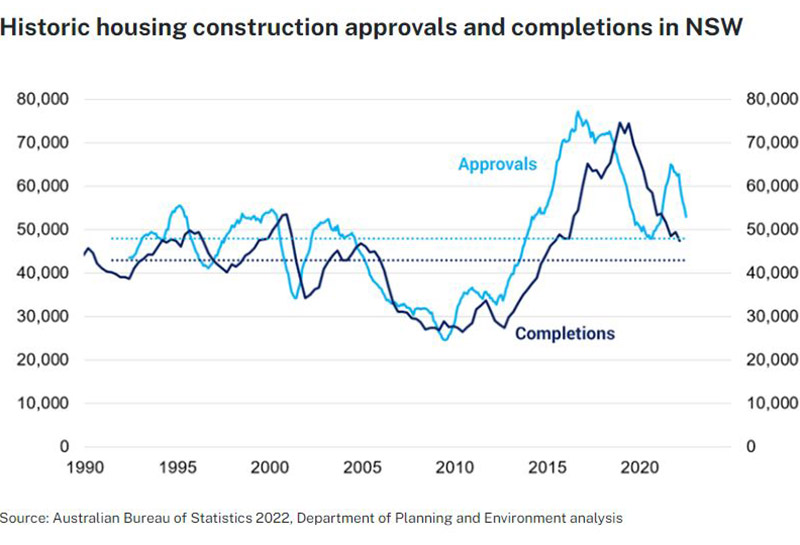Housing supply looms as 2023's biggest property hurdle
Interest rates, climate change, and the rental crisis are major real estate issues but housing supply is at the core of the property market's shortcomings.
A year that has been a tale of two halves is drawing to a close but not without having delivered the final sting in the tail in the form of another rate rise in December.
However, even with rates having gone up again, there are now fewer alarmist headlines than were so prevalent through the middle of the year. On the ground, there are some impressive deals getting done.
As we begin summer, auction volumes are healthy and clearance rates are too. Vendors are increasingly accepting the new market and those with properties on market want to sell quickly.
Clearly the month-on-month rate rises have had a big impact. Time will tell how the increased cost of living will impact festive season economics.
What the market will crave in 2023 is certainty, and this will require the Reserve Bank of Australia to take the time to fully understand what the indicators are telling us before resuming any pre-determined path.
It’s uncertainty that is keeping many investors quiet. On the surface, the fundamentals would suggest investors should be active. There’s no price heat and most agents agree we’re either at or near the bottom of the property price cycle. Rental vacancy rates are extremely low and, consequently, rents are high.
But other factors are at play.
Bashing landlords not helping housing supply
Uncertainty on interest rates, and how the potential for further increases might impact repayments, is tempering investor activity. The NSW Government’s insistence on blaming the rental crisis on landlords and real estate agents is not helping.
It’s a dishonest way of seeking to pull the wool over the eyes of the public.
The rental crisis is the result of a huge undersupply of rental accommodation. With forced fanfare, the NSW Government announced in December that it will apparently provide an extra 70,000 new homes across NSW under a new program.
Unsurprisingly, the details are light and predictably, the announcement comes just before an election. But it is an acknowledgment from Government that the problem is of its own doing and is its to solve.

When demand outweighs supply to such an alarming extent, price rises will occur. When you consider the spike in mortgage repayments investors must contend with as interest rates rise, the scenario becomes even more self-evident.
Government’s inability to solve the supply problem will ensure it gets worse before it gets better. Over the last 12 months, the NSW population has grown by more than 100,000 people while the number of rental properties has declined by 50,000.
It’s a frightening trend which must be arrested and blaming landlords and agents will only make it worse.
Climate change worsening housing woes
This year has seen natural disasters, mainly floods, turn the lives of many Australians upside down and the situation for many people in the state remains extremely worrying.
The spotlight on the way governments plan and deliver new housing has intensified. There are important conversations to have. A cornerstone of those conversations must be the need for more supply. For tenants, incentivising investment in residential property will be crucial.
With climate change factors considered, some areas may be deemed unsuitable for development. Others we know can accommodate more homes.
The challenge for the development community will be to demonstrate how these areas can do more than simply accommodate an increased number of homes but benefit from them.
The challenge for Government will be to exercise some self-awareness, own up to its failures, get busy on supply and stop blaming the industry for its own shortcomings.



















